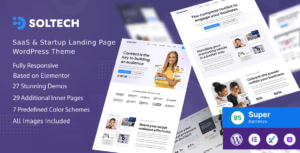Welcome to the world of blogging, where the power of words can captivate and engage millions of readers. As a blogger, you have the ability to create compelling content that not only resonates with your audience but also ranks highly in search engines. But, as you sit down to craft your next masterpiece, one question inevitably arises: What is the ideal length for a blog post?
Some say shorter is better, while others argue that long-form content is the key to success. With so many differing opinions, it can be challenging to determine the optimal length for your posts. However, fear not, as we will explore the factors that influence blog post length and reveal the ideal length for your particular niche.
So, whether you’re a seasoned blogger or just starting, join us as we embark on a journey to uncover the perfect length for a blog post and discover the key to crafting captivating content that engages and inspires your audience. Let’s have a deep dive into the following lines.
Factors that Influence Blog Post Length
Here are a number of factors that influence blog post length. Let’s unveil them.
Purpose of the blog post

It is important to consider the purpose of a blog post when determining its length. A blog post’s length should be tailored to the type of content it contains and what the author wishes to achieve with it. The purpose of a blog post will heavily influence how long it should be, as certain topics require more space for discussion than others, and there is no one-size-fits-all approach to blogging.
For example, if an author is writing a blog post on the latest scientific discoveries related to climate change, they may need more room than usual in order to explain complex concepts and provide enough evidence for their argument. On the other hand, if they are simply providing tips on how to style an outfit or decorate a bedroom, they won’t need nearly as much space in order for readers to understand their message.
Target audience
In the world of blogging, target audiences can have a significant influence on blog post length. As a blogger, it is important to understand which segments are being targeted while producing content. This understanding will help you determine how long a particular blog post should be in order to best engage your readers.
First and foremost, it is essential for bloggers to clearly identify their target audience. Once the appropriate demographic has been identified, focus can then be placed on researching the kind of content that resonates most with them. Additionally, exploring what type and length of posts garner more engagement from this particular audience can also help inform decisions about post lengths.

Type of content
The length of a blog post is an important factor in its success, as the attention span of readers is only so long. How long your blog post should depend on the type of content you are producing and publishing.
For example, if you are writing a blog post about a complex topic that requires extensive research, then it is best to produce a longer article as this will allow more time for developing arguments and explanations. On the other hand, if you are writing about lighter topics such as current trends or fashion advice, then shorter posts may suffice as these topics are less detailed and require less analysis.
Ultimately, understanding what type of content your blog is producing can help you determine how long each post should be in order to maximize reader engagement and satisfaction.
Competitors’ content
Competitors’ content can give you a good idea about how much detail and information should go into your blog post in order for it to stand out from the crowd. For example, if you are writing about a similar topic as one of your competitors, you might need to include more in-depth information in order to provide value and create interest.
Additionally, if you find that one of your competitors routinely publishes longer articles than you do, then it may be time for you to step up and start producing longer posts yourself.
SEO considerations
SEO considerations are an important factor for bloggers to consider when drafting content. SEO, which stands for Search Engine Optimization, is the process of optimizing web pages and content to rank higher in search engine results. As such, SEO considerations can have a major impact on blog post length.
The most important SEO consideration when it comes to blog post length is keyword density. Keywords should be used appropriately throughout the post so that readers can easily find your content via search engines. It’s recommended that keywords account for no more than 1-3% of the total word count of an article, so longer posts are often necessary in order to accommodate them without risking keyword stuffing penalties.
Additionally, long-form posts usually perform better than shorter ones due to their ability to provide more detailed information on a subject matter while also allowing you to include multiple keywords throughout the body of your work.
Brand’s goals and values
The length of a blog post can be influenced by the goals and values of a brand. A brand’s goals are typically set to meet its mission and to increase profits. For example, if the goal is to drive more website traffic, then longer posts may be used as they provide more information for readers and are more likely to appear in search engine results.
On the other hand, values represent what a brand stands for or believes in. If a company places a higher value on concise communication, then shorter posts may be preferred over long-form content. Shorter posts also allow brands to cover several topics within one article or create multiple pieces related to each other without having an overly long read time. This approach can keep readers engaged while still conveying important information quickly and efficiently.
Ideal Length of Different Types of Blog Posts
Mainly, there are three different types of blog posts- Short Form, Medium Length blog post, and Long Form. And, each has different length. In the following lines, we will describe them in detail.
Short-form blog posts (less than 500 words)
The internet has created an abundance of opportunities for writers, bloggers and content creators to share their stories. Short-form blog posts have become increasingly popular due to their ability to quickly and effectively get a point across. Posts of fewer than 500 words can be used to discuss hot topics, respond to reader questions or highlight interesting stories in the news.
Writing short-form blog posts requires concise writing with targeted points that are easy for readers to understand. By distilling the key elements of a story into just 500 words or less, bloggers have the opportunity to provide valuable insight within a short amount of time. Many readers prefer shorter formats as they can easily consume content on mobile devices without having to commit too much time or attention.
In order for your short-form blog post to be successful, it must be well structured and written clearly so that your point is communicated efficiently.
Pros
- Quick and easy to write
- Easier to read
- Better for mobile
- Can be more shareable
- Can help with SEO
- More focused
- Can increase engagement
Cons
- Limited depth
- Limited authority
- Limited search value
- Limited ad revenue potential
- Limited differentiation
Examples of successful short-form blog posts
- “10 Life Lessons I Learned From a Decade of Travel” by Matt Kepnes, founder of the travel blog Nomadic Matt. This post is just over 500 words long and provides quick, actionable tips for travelers based on the author’s personal experience.
- “The Art of Saying No” by Seth Godin, marketing guru and author. This post is just over 200 words long and offers a concise, insightful reflection on the importance of setting boundaries and saying no in order to achieve success.
- “The Surprising Power of Simply Asking Coworkers How They’re Doing” by David Burkus, author and speaker. This post is just over 400 words long and highlights the positive impact that a simple question can have on workplace relationships and morale.
- “10 Reasons Why You Should Start a Side Hustle Today” by Chris Guillebeau, author and entrepreneur. This post is just under 500 words long and provides a persuasive argument for why everyone should consider starting a side hustle.
- “How to Set and Achieve Goals in 2021” by Michael Hyatt, author and leadership expert. This post is just over 600 words long and offers a practical, step-by-step guide to setting and achieving goals in the new year.
These short-form blog posts are successful because they are concise, focused, and offer valuable insights or tips that are easy for readers to digest and act on.
Medium-length blog posts (500-1000 words)
Medium-length blog posts (500-1000 words) offer the perfect balance between short and long form content. Bloggers can use them to explore topics in greater depth than shorter pieces, without overwhelming readers with overly long articles. They also take advantage of search engine optimization by providing enough information for readers to find it quickly and easily on the web.
When crafting a medium-length post, bloggers should focus on identifying their target audience, researching relevant topics, structuring their article into an engaging format, creating compelling titles and headlines, optimizing for search engines, including multimedia elements such as images or video clips, and promoting their work through social media sites or other outlets. By keeping these tips in mind while writing 500-1000 word blog posts, bloggers can produce high-quality content that will capture readers’ attention and draw more traffic to their site.
Pros
- Allows for a more thorough treatment of a topic
- More shareable and accessible than longer posts
- Can be easier and faster to write than longer posts
- May be more versatile than shorter or longer posts
Cons
- May not provide enough depth
- Can be too long for some readers
- May not rank as well for certain keywords
Examples of successful medium-length blog posts
There are many successful medium-length blog posts that have resonated with readers and achieved high levels of engagement. Here are a few examples:
There are many successful medium-length blog posts that have resonated with readers and achieved high levels of engagement. Here are a few examples:
- “The Power of Purposeful Storytelling” by Forbes: This blog post is around 700 words and discusses the importance of storytelling in business and marketing. It offers practical tips and real-life examples of how effective storytelling can help companies connect with their customers on a deeper level.
- “The Top 10 Books Every Entrepreneur Must Read” by Inc.: This post is around 800 words and provides a concise list of essential books for entrepreneurs. It includes brief summaries of each book and why it is valuable for entrepreneurs to read.
- “The Surprising Benefits of Journaling Every Day” by Medium: This post is around 900 words and explores the benefits of journaling for mental health and personal growth. It provides research-backed evidence and tips for incorporating journaling into a daily routine.
- “Why We Need More Women in Leadership” by Harvard Business Review: This post is around 1,000 words and discusses the benefits of gender diversity in leadership roles. It provides compelling arguments and real-life examples of the positive impact that women leaders can have on companies and society as a whole.
- “The Science of Procrastination and How to Manage It” by Fast Company: This post is around 1,200 words and delves into the psychology of procrastination. It offers practical tips for overcoming procrastination and staying focused on goals.
Overall, these successful medium-length blog posts all offer valuable insights, practical tips, and real-life examples in a concise and engaging format that resonates with readers.
Long-form blog posts (over 1000 words)
Long-form blog posts (over 1000 words) are becoming increasingly popular and beneficial for both readers and writers. With a longer post, writers can go into more detail, providing readers with an in-depth look at the topic or issue being written about. Longer posts also allow writers to include more valuable information they may not have been able to fit into a shorter post.
The benefits of long-form blog posts extend beyond just the writer and reader though; search engines prefer them as well due to their content depth. Search engines place higher rankings on pages that provide more detailed information because it often means that the author has put in extra research effort when creating the post. This makes long-form blog posts much more likely to show up in search engine results pages (SERPs).
Pros
- In-depth exploration of a topic
- Provides more value to readers
- Boosts SEO
- Demonstrates expertise and authority
- Increases social sharing and backlinks
- Enables opportunities for engagement
- Can be repurposed into other content formats
- Establishes thought leadership
- Improves conversion rates and brand loyalty
Cons
- Requires more time and effort to create
- May overwhelm some readers
- Not suitable for certain topics
- May be difficult to maintain engagement
- Requires strong writing ability and research
Examples of successful long-form blog posts
There are many examples of successful long-form blog posts out there, but here are a few that have stood the test of time and proven to be highly effective in terms of traffic, engagement, and social sharing:
- “The Ultimate Guide to Writing Blog Posts That Rank in Google’s Top 10” by Neil Patel – This is an in-depth guide that provides step-by-step instructions on how to write blog posts that rank well in search engine results pages. It’s comprehensive and actionable, making it a valuable resource for bloggers and content marketers.
- “How to Build a Billion Dollar App” by George Berkowski – This post is a detailed analysis of what it takes to create a successful mobile app. It covers everything from ideation to launch and beyond, providing insights and advice from some of the most successful app developers in the world.
- “The Complete Guide to Understanding Consumer Psychology” by Gregory Ciotti – This post delves into the psychology of consumer behavior and provides actionable tips on how to use this knowledge to improve marketing campaigns. It’s comprehensive and well-researched, making it a go-to resource for marketers and business owners.
- “The Beginner’s Guide to SEO” by Moz – This post is a comprehensive guide to search engine optimization (SEO), covering everything from keyword research
Final Appearance
In conclusion, there is no one-size-fits-all answer to the question of what the ideal length for a blog post is. The ideal length will depend on a variety of factors, including the topic of the post, the goals of the post, and the preferences of the target audience.
That being said, there are some general guidelines that can be useful when determining the length of a blog post. Many experts recommend aiming for posts that are at least 1,500 words in length, as longer posts tend to perform better in terms of search engine optimization and engagement. However, it’s also important to remember that quality should always be the primary focus, and that a shorter, well-written post can be just as effective as a longer one.
Ultimately, the key is to experiment with different lengths and formats to see what works best for your specific blog and audience. Pay attention to the metrics and feedback you receive, and be willing to adapt and adjust your approach as needed. With time and effort, you can find the ideal length for your blog posts and create content that resonates with your readers and achieves your goals.








